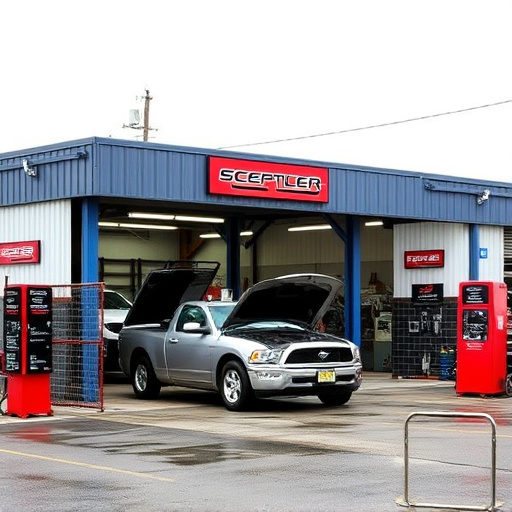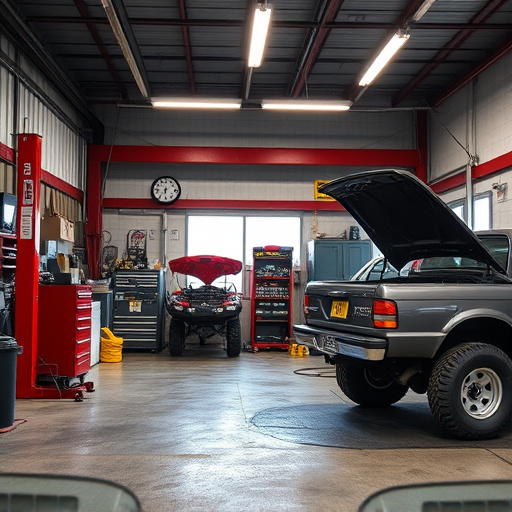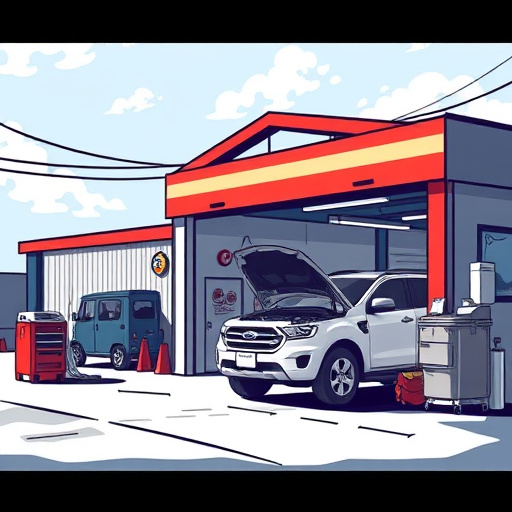Before attempting fender dent repair, assess damage, gather tools, and clean the area. DIY kits are suitable for minor dents but professional services are recommended for extensive or hard-to-reach ones. Learn simple techniques like using a dent puller or hammer and anvil for shallow vs deep dents. Fine-tune with sandpaper or polishing compound for a professional finish.
Are small dents on your car’s fenders driving you crazy? Learn how to fix them yourself with this step-by-step guide for effective fender dent repair. First, assess and prepare your car’s fender, then decide if DIY methods are suitable or if professional repair is needed. With the right tools and techniques, you can remove those pesky dents and restore your vehicle’s sleek appearance.
- Assess and Prepare Your Car's Fender
- Choose Between DIY or Professional Repair
- Step-by-Step Guide to Fixing Dents
Assess and Prepare Your Car's Fender

Before attempting any fender dent repair, it’s crucial to assess and prepare your car’s damaged area thoroughly. Start by examining the extent of the dent; measure its depth and size accurately. This step is essential for determining the appropriate repair method and necessary tools. If there are multiple dents or deeper damage extending into the metal, consider seeking professional collision damage repair services to ensure structural integrity.
While preparing your workspace, gather all required materials—including a dent puller, putty knife, and body filler—and ensure proper ventilation. Clean the fender diligently to eliminate any dirt or debris that might interfere with the repair process. For luxury vehicle repair, paying extra attention to detail and using high-quality products can make a significant difference in the final outcome, ensuring your car maintains its pristine condition even after repairs for tire services.
Choose Between DIY or Professional Repair

When considering how to remove small dents from your car’s fender, the first decision point is whether to tackle the job yourself or seek professional help. For minor dents that are fresh and haven’t left deep marks, many car owners opt for DIY fender dent repair. This approach offers cost savings and flexibility in terms of scheduling. Various tools and kits designed specifically for vehicle dent repair are readily available at automotive supply stores and online marketplaces. These kits often include materials like putty, plastic shapers, and sandpaper to help you reshape the bent metal back to its original form.
On the other hand, if the dents are extensive or located in hard-to-reach areas, professional automotive body work might be a better choice. Experienced mechanics have access to specialized tools and techniques that can handle more complex repairs effectively. They also understand the intricate details of your vehicle’s design, ensuring precise results that match the original factory finish. While professional repair comes at a higher cost, it guarantees superior quality and longevity for your auto maintenance efforts.
Step-by-Step Guide to Fixing Dents

Removing small dents from your car’s fender can be done with a few simple steps and tools commonly found at home. First, inspect the dent to determine its size and depth. If it’s shallow, you might be able to use a dedicated dent puller kit, which applies heat and suction to pop out the dent. These kits are easy to use and highly effective for smaller, newer dents.
For deeper or more persistent dents, consider using a hammer and anvil approach. This involves placing a piece of wood or plastic behind the dent as a protection for your car’s paint, then gently tapping around the edge of the dent with a rubber mallet while applying pressure from behind with the hammer. It’s important to be patient and methodical, working slowly to avoid widening the dent. Once you’ve managed to smooth out the dent, you might need to fine-tune the area using sandpaper or a polishing compound for a seamless finish, similar to how a collision repair shop would, but on a smaller scale, with DIY car scratch repair techniques.
After carefully assessing and preparing your car’s fender, you now have a choice between DIY fender dent repair or seeking professional assistance. Regardless of your decision, each method offers viable solutions for removing small dents. Following our step-by-step guide, you’re equipped with the knowledge to fix dents yourself if you choose to go the DIY route. If not, remember that professionals are readily available to provide expert fender dent repair services, ensuring your car returns to its pre-dent condition.














